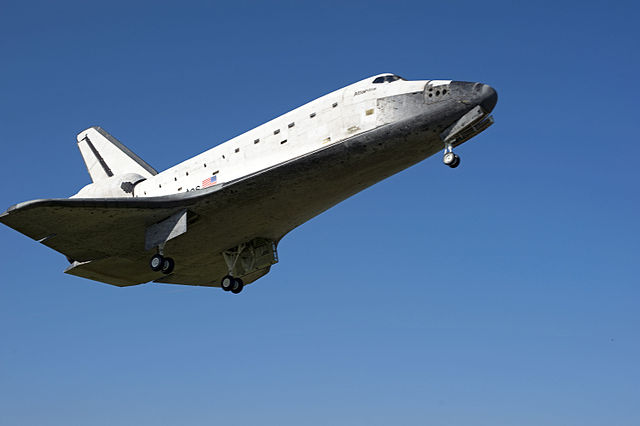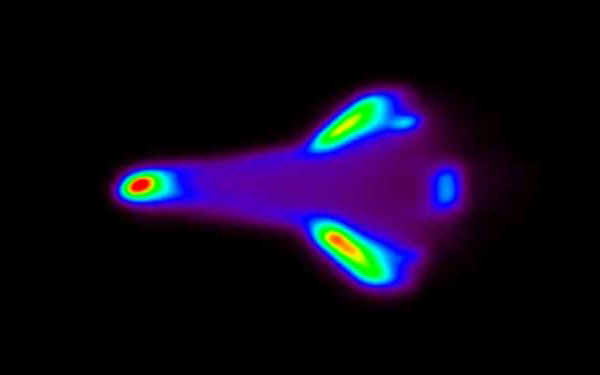A beautiful end!
One quibble--a case could be made for landing at Vandenberg AFB, I suppose; it wouldn't then be flying over land, as would be the case if the destination were Edwards AFB. But I would have thought that the better margin for landing a stricken craft would have dictated Edwards, even at some risk.
Vandenberg, I suppose, may have a landing field meant for Orbiter landings, since it was supposed to become a launch site for Department of Defense STS launches, to polar orbits--the rocket would boost southward instead of eastward. By that same token, I'd think the landing strip built there (if any; the plan may have been for Edwards to take the landing and for the Orbiter to be shipped the relatively short distance west--but security was a major issue for many proposed DoD missions and ideally the Orbiter would indeed be able to land exactly where it was launched from) would therefore be oriented north-south, unlike most designated Orbiter landing strips which are east-west, since most missions are more or less equatorial. (ISS is more polar than equatorial but still the final approach is likely to be from the west, not north-south). So Columbia, coming in from its low-inclination orbit, would have to turn to aim at any strip I'd expect at Vandenberg.
Yesterday afternoon I wrote the following, and then forgot to actually post it--I was very tired! I wish it had gone up before this post but I will let it stand as is because I think it's still relevant, as there are those who might say it wasn't reasonable to attempt the landing:
Ideally, you'd want to land it at Edwards - no real risk from a disintegration on reentry.
Unfortunately, that seems not to have been possible given the constraints NASA was operating under....But perhaps Arch has something else in mind when he suggests that "this has only one chance in a hundred" to work." Otherwise, the choice seems plain: Deorbit it now while you still have the capability to control where the pieces fall.
The Orbiters were never intended to be landed unmanned, true. It's a question of whether equipment could be installed, fairly simply, to perform those few operations under command from the ground--and whether it was considered worthwhile to spend any effort during the frantic preparations for saving Columbia's crew to devise the necessary kludges, test them in simulators, and simplify their installation so that Atlantis crewmembers would not be unduly bogged down doing that by the way on their way out. Considering the high probability that Columbia would not survive intact to emerge from the radio interference of ballistic reentry, it has to be very low key and low priority. It's a question of how easy would it be to fill the gaps, with the understanding that any such effort would probably be in vain.
If that's what Atlantis crew did in fact do, then there is some hope alive in NASA that, relieved of her crew and much mass, Columbia will survive the high-speed reentry phase well enough to be controllable, and even landable.
To land at Edwards she must pass over inhabited land of course, but many Orbiters have done so. It's a question of whether there's a grave chance that if she makes it as far as the California coast something might fail at the last minute and send it down uncontrollably at some random crash site. But by the time Columbia is approaching the dry lake bed she'd have gone through the worst trials and if control is problematic by then, a safe ditch into the ocean should still be an option. Even in the worse case the odds would be it would crash in very sparsely inhabited country; I'm trying to visualize it; I think an approach path straight west of the landing zone would pass over some towns right on the coast but a short distance inland becomes essentially high desert; the area around Edwards AFB is actually itself quite amazingly populated these days though.
I hope they can go for it. But the arguments in favor of simply commanding her to burn up over the ocean are strong ones too. Really the only reason to try to recover Columbia is sentiment; there might be a little scientific and engineering knowledge to be gained by studying the craft but surely the data the spacewalkers took tell them most of what they'd want to know. If the patch job can enable an emptied Columbia to survive, it surely would interesting to study how it managed to get the job done, perhaps important to future thermal protection systems and designing repair kits for future STS missions. That would be the main objective reason to try, but frankly comparable data can probably be gotten from carefully designed suborbital model launches.
Sentiment should not be discounted as a reason to try--unless any serious risk of innocent bystanders is involved of course.
---------
There, I wrote that yesterday.
Something I forgot to mention, that might also serve as a reason the landing site had to be Vandenberg, was that Rodgers Dry Lake is not
always dry; at certain times, it actually does rain there, and when it does the lake becomes a pool of mud. This is why it is so flat and suitable for landings when it is dry, getting repaved every year like that.
It might be, this early in the year, that Edwards was mudded out on this date.
Kudos to you, Archibald!
I still have my reservations about the power situation; clearly they cut it close and that would have been impossible without more stringent power use cuts than you mentioned in your canon posts. Even with the Eureca solar panels, which you never verified were compatible, in voltage terms, with the power system of Columbia. To have the reserve to make this landing, after keeping the crew alive some days longer than their tanks could have lasted at the power levels you told us they were consuming, they must have cut it still further, and you should have mentioned that, and verified Columbia could indeed function at the even lower level. Only that can explain how they operated when Columbia was in Earth's shadow as it would have been a bit less than half the time.
And I stand with e of pi; the rescue supply launch should have carried more cargo.
But on the whole this is an awesome story, one that with these few tweaks is perfectly realistic too, and I thank you for it.



